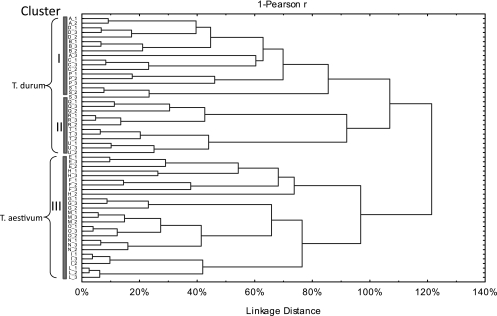Fig 4.
Dendrogram obtained from cluster analysis based on composition of flour (maltose, glucose, and fructose and total and individual free amino acids) and microbial community (cell densities of lactic acid bacteria and yeasts, number of species and strains isolated from each sourdough, and percentage of obligately homofermentative and obligately and facultatively heterofermentative lactic acid bacteria) data from sourdoughs used for the manufacture of traditional/typical Italian breads. Sourdoughs are indicated by the following alphanumeric codes: Pane di Altamura PDO, A_1, A_2, A_3; Pane di Laterza, B_1, B_2, B_3; Pane di Matera PGI, C_1, C_2, C_3; Pane di Montecalvo Irpino, D_1, D_2, D_3; Pane Casereccio di Reggio Calabria, E_1, E_2, E_3; Pane Casereccio del Molise, F_1, F_2, F_3; Pane Casareccio di Genzano PGI, G_1, G_2, G_3; Bozza Pratese, H_1, H_2, H_3; Pane di Altopascio Tradizionale, I_1, I_2, I_3; Pane di Terni, L_1, L_2, L_3; Bastone di Padova, M_1, M_2, M_3; Coppia Ferrarese PGI, N_1, N_2, N_3; Pane Casereccio Marchigiano, O_1, O_2, O_3; Pane di Cappelli, P_1, P_2, P_3; Moddizzosu, Q_1, Q_2, Q_3; Pane Carasau, R_1, R_2, R_3; Pane nero di Castelvetrano, S_1, S_2, S_3; Pane di Lentini, T_1, T_2, T_3; Pagnotta del Dittaino PDO, U_1, U_2, U_3.

